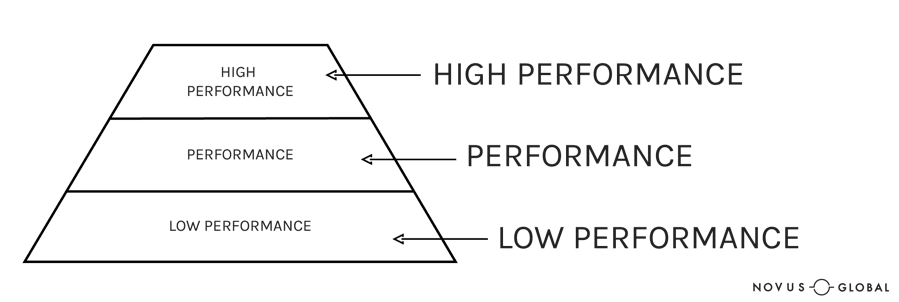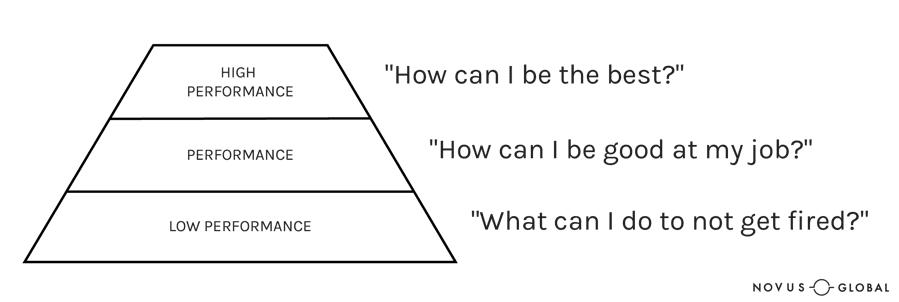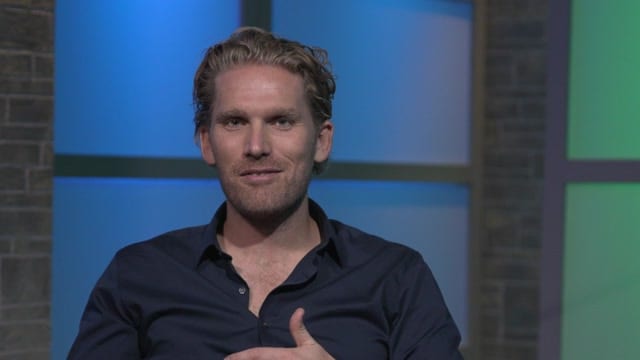
Your faith doesn’t make life easier, your faith makes you stronger.

Your faith doesn’t make life easier, your faith makes you stronger.

Get free, instant access to GLS Podcast Episode Show Notes. Leverage episode summaries, key takeaways, reflection questions, resources mentioned, related links and applicable downloads, including Show Notes PDF and Episode Audio File (MP3).
One reason we love to watch sports is because of the unique leadership lessons that play out on and off the field. In this episode, recorded at the 2018 GLS, Rasmus Ankersen shares his experience from the world of sports, as the chairman of two successful football clubs–one in Denmark and one in England. Ankersen talks to Jeff Lockyer about the importance of questioning success as well as failure. He also shares take-aways from his book The Gold Mine Effect which explores the reasons why certain coaches, clubs and countries produce disproportionate numbers of professional and Olympic athletes.

To remain relevant in the 21st century you will have to reinvent yourself, not just once but repeatedly. – Yuval Noah Harari
Most of what people think about unleashing human performance is wrong.
Current management models typically divide employees or volunteers into three general categories:

1) Low-performers ask the question, “What’s the least amount of work I can do and not get fired?” They don’t usually say this out loud, but it guides their behavior.
2) Performers ask the question, “How can I do a good job?” These people don’t want to be horrible but they don’t want to be great either.
3) High-performers ask the question, “How can I be the best?” Much ink (or zeros and ones) has been spilled writing about high-performers and how to attract and retain them. But at Novus Global we believe attracting and retaining high-performers is a mistake and doing so creates a predictable set of problems.

Recently I spoke with some leaders from a Fortune 100 Company. I asked them to describe their team and they were quick to say, “We’re a group of high-performers.”
“Great,” I say. “So, what’s the problem?”
“Well,” they said, shifting in their seats, “It’s like this…”
The conversation sounded exactly like what I had heard from dozens of other high-performing companies across the world. Let’s see if any of these sound familiar.
This creates what we call the arrogance of limited success. And we see this in our work every day. But this isn’t the only problem with high-performance.
The other problem is high-performance is attainable. You can be the best. In your department. At your company. In the world.
And simply knowing that fact tends to keep people from attaining it.
Ever notice how most people and teams hit a little below where they aim? This is because accomplishment comes with its own burden: the burden of having to discover what comes next. This burden creates a magnetic push away from accomplishment. It’s what creates an experience that many feel but few articulate: avoiding the pain of success.
And both these psychological barriers–the arrogance of limited success and fear of the pain of success–are present but invisible, and consequently harder to deal with, in high-performers and high performing teams.
To overcome these challenges, you must become obsessed with a question few leaders ask: “What comes after high performance?”
Highlight, memorize, brand this next sentence into your mind: If your team doesn’t have a clear and compelling answer to the question “What comes after high performance?” then you absolutely have an unnecessary cap on the possibilities of your leadership and the impact of your organization.
So, what comes after high-performance? Let me be the first to introduce you to the idea of meta-performance.
Not “meta” like “meta-data” but “meta” as in “metamorphosis.” Like a caterpillar transforming into a butterfly.
A meta-performer isn’t committed to be the best (how dull)…
… a meta-performer is committed to constantly exploring capabilities.

While answering the question, “How can I be the best?” has a finite answer, asking, “What am I capable of accomplishing” has infinite answers. Because human potential has fewer limits than human competition.
Meta-performers are never done. Not only do they have room to grow but they relish and create new opportunities to grow.
Dwayne Johnson is a meta-performer. He was a failed football player who changed his name to Rocky Maivia for the WWF and then changed his name to The Rock to become one of the most famous professional wrestlers in the world.
Then he left professional wrestling and changed his name to Dwayne The Rock Johnson to become one of the world’s most famous actors. Then he changed his name again back to just Dwayne Johnson, as one of the most powerful media producers in the world.
In 2020 he may run for President of the most powerful country in the world.
Mr. Johnson is a man who consistently expands his horizons to explore his capabilities.
Just imagine what it would look like if you were a meta-performer and were leading a meta-performing team.
So how do you begin to do that?
I was recently at an event where Netflix former head of human resources spoke. She was one of the first 30 employees-back when you could address the entire company by standing on a chair. She talked about infamous “PIPs”-performance improvement plans-and how people hate them because they’re seen as a form of punishment or a legal paper trail so you can fire someone without getting sued.
Create goals where you’re fully committed to paying the price to reinvent yourself and accomplish the impossible.
During her presentation, I realized something about the culture of our firm: every single coach in our firm is on a performance improvement plan from the second they get hired. We don’t do this because people start in trouble. We do this because we have a base assumption about coaches in our firm that they want to grow. They don’t want to be the best. They want to explore what their capabilities.
For example, every fourth quarter we start looking at next year’s goals and hold a space for our coaches to get clear on what they’re committed to achieve. Our coaches can pick whatever goals they want, but they have to meet two criteria:
1. The goal has to be seem improbable or impossible to them.
2. The goal has to be worth the cost of whatever it would take for them to grow to achieve it.
One of the greatest joys of leading Novus Global is seeing how year after year our coaches grow to achieve in December what they thought was impossible twelve months earlier.
That’s the first step to becoming meta-performing: create goals where you’re fully committed to paying the price to reinvent yourself and accomplish the impossible.
A few years ago, we were brought in to help a nationwide company close a $20 million budget shortfall. This is not a job for high-performers. High-performers will do their best. Usually they think they’re already doing their best, which is why they struggle to increase their performance. No, this was a job for meta-performers.
Our firm spent a year traveling the country working with their teams, doing two-day trainings and months of coaching with hundreds of their leaders, inviting them to see themselves as meta-performers and unlearning the bad habits of high-performers.
At the end of the year they didn’t close the $20 million gap. Instead, they surpassed the budget by over $10 million dollars.
This is the power of meta-performing cultures. What was previously thought to be impossible becomes possible.
One of my favorite quotes from Walt Disney is, “It’s kind of fun to do the impossible.”
Most people think he’s using understatement. We think, “Kind of fun? Are you kidding? I think it would be really fun to do the impossible.”
That’s because they’ve never done the impossible. To those who have never done the impossible, it feels daunting. To those who regularly do the impossible, it feels like any other day.
What I called ‘impossible’ is what I now call ‘Tuesday.”
The greatest thrill of our work is when our clients tell us, “If you would have told us a year ago these would be the results from our leadership, we would have told you–impossible. But now what we used to call ‘impossible’ we call ‘Tuesday.’”
That’s what meta-performers do. They turn the impossible into Tuesday.
As you look at your goals for 2019, ask yourself: are my goals performing, high-performing or meta-performing?
And may you discover the rush of exploring what you’re capable of. May you all look back when this year is over and say, “What I called ‘impossible’ is what I now call ‘Tuesday.’”
May you all go beyond high-performance.
May you all become meta-performers.

At the conclusion of The Global Leadership Summit in Zambia, Lawrence Temfwe, local pastor, non-profit leader, and Summit champion, left the audience with these powerful words of encouragement and challenge. May they also bless you as they have blessed us.
 My beloved brothers and sisters, we now conclude a great Summit. We have been edified and uplifted. We promised you that you would: Get a unique blend of vision, inspiration and practical skills that you can immediately apply. We now challenge you to go back into your communities to: Leverage the Summit materials as a resource to transform yourself, family, church, media, government, business, community and nation.
My beloved brothers and sisters, we now conclude a great Summit. We have been edified and uplifted. We promised you that you would: Get a unique blend of vision, inspiration and practical skills that you can immediately apply. We now challenge you to go back into your communities to: Leverage the Summit materials as a resource to transform yourself, family, church, media, government, business, community and nation.
We encourage you again to read the notes and listen to the talks and discuss them together—with friends, family and workmates. These teachings are the products of much prayer and meditation and are well worthy of careful consideration.
As we leave the Summit, it is my prayer that you go with the question: How do I contribute to making Zambia a better place?
How do I contribute to making Zambia a better place?
It is my prayer that you have received marching orders from the Lord about your role in loving your neighbor, fighting corruption and creating jobs. It is my prayer that the Summit has challenged you to be part of the answer to Zambia’s problems. May your catch words be: Not under my watch will people do immoral things and get away with it. It is about time that Zambia knew there are Christians in this country.
I am asking you, therefore to:
until Zambia has crushed the causes of poverty.
until every Zambian has access to clean water and good sanitation.
until every child in Zambia has access to quality education.
until every Zambian will not be judged on the basis of their tribe, but as Dr. Martin Luther King put it, “be judged on the basis of the content of their character.”
until in Zambia every Member of Cabinet, Parliament and the President acts justly, loves mercy, and walks humbly with God.
until Zambia’s judiciary system is filled with men and women who will see to it that justice is done.
until every Zambian who goes to hospital receives quality health services.
until every Zambian hears the words that “Jesus is Lord.”
We will fail along the way, but we have learnt in this Summit that failure is part of the deal if we are going to make a difference. And there will be those moments when the struggle of hope will be transformed into weariness and hopelessness. Our dreams will sometimes be crushed and our hopes blasted. But difficult and painful as it is, we must walk on in the days ahead with bold faith because we have a God who has promised us a better future.
When our days become lifeless with grey clouds of despair, let us remember that we serve the Creator of the earth and the Universe who told Moses, “And now the cry of the Israelites has reached me, and I have seen the way the Egyptians are oppressing them. So now, go. I am sending you to Pharaoh to bring my people, the Israelites out of Egypt.”
This is the same God who has given us a baptism of holy discontent and will be with us until the task is accomplished.
Will you trust God today?
Let us roll on, team. The Lord is sending us.

Be relentless and unwavering in what you want to achieve, but not inflexible to how you want to get there.

Simon Sinek describes one life habit that has made him a better leader.

Successful companies often hesitate to change until it is too late because they forget who they really are. Instead they become obsessed with protecting the physical manifestation of how they make money.
This is what happened to the publishing industry. Year after year publishers sold so many books that they assumed they were in the book industry. But such a view is too narrow. In reality, publishers are in the business of telling stories that engage people, and the book is just one of many vehicles to deliver it. The success of the printed book over several decades led publishers to forget what they really were, and so many of them missed out on technological developments that had a huge impact on their industry.
Kodak, too, fell into the same trap. The success of the analog camera made Kodak believe that its market was photographic film. But Kodak’s real market was capturing memories, not photographic film. Because the company never really grasped this concept, it failed to stay relevant in a market switching from film to digital. The phone camera arrived and ate Kodak’s lunch.
A company is never just the physical manifestation of how it makes money. It is something more and something deeper than that.
When you invest your emotional shares into who you are, rather than what you are making, then you can adapt to a changing business landscape before it’s too late.

Rasmus Ankersen describes one life habit that has made him a better leader.

Despite the hectic pace of modern work, many organizations take an additive approach to learning initiatives.
Participants are expected to develop new skills while keeping up with their many day-to-day responsibilities.
How can employees, whose plates are already overflowing into evenings and weekends, greet a new training program or initiative with enthusiasm?
Retire practices that are no longer critical to your success and may only be hanging around due to inertia.
The degree of space, or lack thereof, often is an overlooked consideration when planning a training initiative. And it’s frequently the culprit when a wonderful program or initiative is launched but doesn’t catch: There’s insufficient oxygen within the organizational system.
Examine the programs you’ve delivered to this audience in the past five years. Lay out a mental map of all the threads of these programs that are still taking learners’ time or mental energy. Retire practices that are no longer critical to your success and may only be hanging around due to inertia.
If your course requires an hour a week, take the time to think of where learners will find the time in their schedule. Instead of viewing learning as an additive, it’s good to think reductively first. Working together with leadership, find something the learners can let go of—even just for a little while. Prime candidates might be a monthly meeting or a report that provides little tactical value. In your launch communications, show your target audience that you respect their current workload, and you’ve freed up space for learning.
Make it your goal to eliminate more time than your training program will consume. Do the rough math of what your reductive work will save versus what your initiative will consume for learners. Be generous in your timeframes because tasks often take longer than expected when lifted from the paper and put into action. And don’t keep this ratio a secret. If skeptical learners see that you’re taking two hours a month off their plates only to request one back, you can use their gratitude toward the success of your new training program.
In a new initiative, it’s important to have an ear to the ground to be able to make the necessary course correction.
In a new initiative, it’s important to have an ear to the ground to be able to make the necessary course correction. Make sure learners are given the time and opportunity to share their feedback and ideas with you about how the program could support them more. Don’t assume that folks will go out of their way to give you these thoughts; they really are too busy. Build the feedback space into your instructional design so it’s an integral part of the process.
Take time before your teaching to create space. In doing so, you maximize traction and you pre-solve some of your learner-engagement issues.
Best of all, you set learners up for the things we all hope for: self-generating enthusiasm that yields successful and sustainable outcomes.

Chris McChesney describes one life habit that has made him a better leader.
“We welcome and encourage comments on this site. There may be some instances where comments will need to be edited or removed, such as:
If you have any questions on the commenting policy, please let us know at heretoserve@globalleadership.org”
Recent Comments